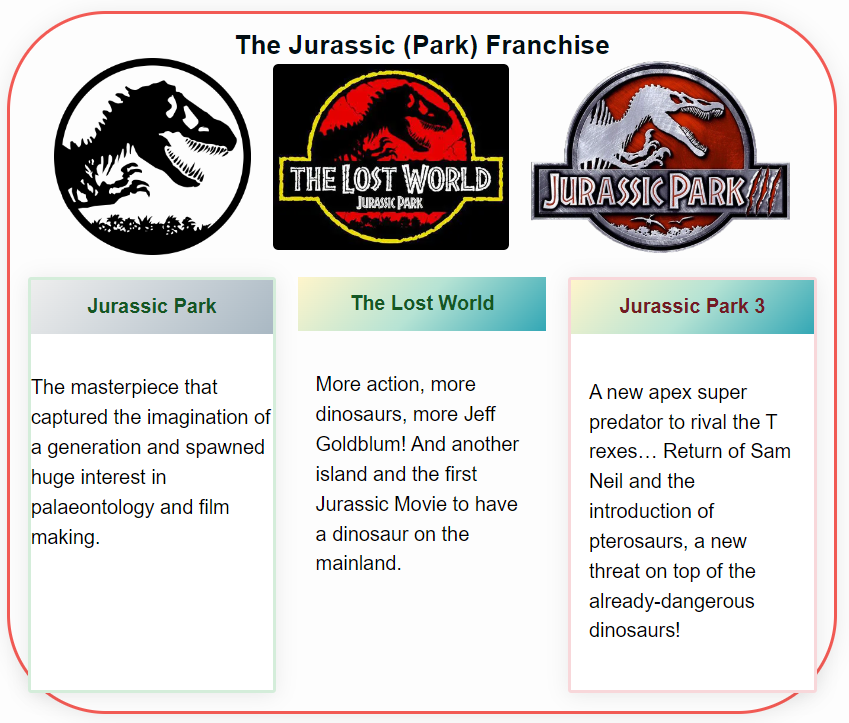It’s about time I covered this, as I’ve always been fascinated by what dinosaurs and other prehistoric creatures lived where I live, and what could be waiting to be discovered on my doorstep.
In fact, where I live in Oxfordshire, there is a waste facility designed to look like a dinosaur footprint based on nearby tracks in Ardley – a small village near the M40 (a UK motorway) and not far from Oxford, which has some fine displays and collections.
“The architectural form of the Ardley ERF was chosen to replicate a dinosaurs footprint, as some of the finest fossilised dinosaur trackways ever found in Europe, left by Megalosaurus and Cetiosaurs, have been discovered on Ardley Quarry floor. In addition, the visitor centre on site has the ‘Megawattosaurus’, a life-size model dinosaur created entirely using waste materials.”
Ardley Energy Recovery Facility
The United Kingdom, though modest in size, boasts a rich and fascinating prehistoric past.
From the discovery of ancient dinosaurs to the profound changes in its Mesozoic landscapes, the UK’s history is a tapestry of evolutionary wonders.
Furthermore, it has been the home to many pioneering paleontologists whose contributions have been instrumental in unravelling the mysteries of ancient life.
Let’s delve into the dinosaur species found in the UK, and explore the environmental shifts during the Mesozoic Era – and celebrate the most notable paleontologists and researchers in the field.
Dinosaur Species Found in the UK
The British Isles have been a fertile ground for discovering dinosaur fossils. Here’s a glimpse of the notable species unearthed in this region:
UK Dinosaur Species
| Species | Location Found | Discoverer | Year Found | Age of Fossil |
|---|---|---|---|---|
| Iguanodon | Sussex | Gideon Mantell | 1822 | Early Cretaceous |
| Iguanodon bernissartensis | East Sussex | George Boulenger | 1881 | Early Cretaceous |
| Megalosaurus | Oxfordshire | William Buckland | 1824 | Middle Jurassic |
| Neovenator | Isle of Wight | Steve Hutt, David Martill, and Michael Barker | 1978 | Early Cretaceous |
| Eotyrannus | Isle of Wight | Gavin Leng | 1997 | Early Cretaceous |
| Baryonyx | Surrey | William J. Walker | 1983 | Early Cretaceous |
| Hypsilophodon | Isle of Wight | Thomas Huxley | 1869 | Early Cretaceous |
| Cetiosaurus | Oxfordshire and others | Richard Owen | 1842 | Middle Jurassic |
| Camptosaurus | Dorset | Othniel Charles Marsh | 1879 | Late Jurassic |
| Scelidosaurus | Dorset | James Harrison | 1859 | Early Jurassic |
| Valdosaurus | Isle of Wight | Peter Galton | 1975 | Early Cretaceous |
| Aristosuchus | Isle of Wight | Richard Owen | 1876 | Early Cretaceous |
| Mantellisaurus | East Sussex | Gideon Mantell | 1832 | Early Cretaceous |
| Polacanthus | England and Spain | Reverend William Fox | 1865 | Early Cretaceous |
| Proceratosaurus | Gloucestershire | F. Lewis Bradley | 1910 | Middle Jurassic |
Mesozoic Era: Environmental Shifts in the UK
Triassic Period (252 – 201 million years ago)

The Triassic period in the UK was characterized by desert landscapes and arid climates, as the region was part of the supercontinent Pangaea.
Jurassic Period (201 – 145 million years ago)
During the Jurassic, the UK moved northward, leading to a mix of shallow seas and low-lying islands with lush vegetation.

Cretaceous Period (145 – 66 million years ago)

In the Cretaceous, the region experienced further marine environments with the emergence of flowering plants, providing diverse habitats for various life forms.
Notable Paleontologists and Researchers in the UK
The UK’s paleontological discoveries owe much to the dedication and expertise of many researchers. Here are some of the most prominent figures:
- Mary Anning (1799-1847) – A pioneering fossil collector and paleontologist known for discoveries in Jurassic marine fossil beds at Lyme Regis.
- Richard Owen (1804-1892) – Coined the term “Dinosauria” and was a comparative anatomist and paleontologist.
- Gideon Mantell (1790-1852) – Discovered and identified the first dinosaur teeth of Iguanodon.
- William Buckland (1784-1856) – First professor of geology at Oxford University and described Megalosaurus.
- Dorothea Bate (1878-1951) – A pioneering paleontologist known for her work on island dwarfism in mammals.
- Hugh Falconer (1808-1865) – A key figure in the study of fossil elephants and early human remains.
- Sir Arthur Smith Woodward (1864-1944) – Worked extensively on fish fossils and was involved in the Piltdown Man controversy.
- Mike Benton – Professor of Vertebrate Paleontology at the University of Bristol, known for his work on the extinction of dinosaurs.
- Paul Barrett – A meritorious researcher specializing in dinosaurs at the Natural History Museum, London.
- Jenny Clack (1947-2020) – Renowned for her work on the evolution of early tetrapods.
- Michael J. Benton – Professor at the University of Bristol, significant contributor to understanding dinosaur diversification.
- Simon Conway Morris – Known for his work on the Burgess Shale and Cambrian explosion.
- Angela Milner (1947-2021) – Associate Keeper of Paleontology at the Natural History Museum and an expert on dinosaurs and birds.
- Leslie Noè – Known for his research on ichthyosaurs.
- Andrew Milner – An expert on early tetrapods and the Permo-Triassic extinction event.
- Susannah Maidment – Specialist in Stegosauria and a researcher at the Natural History Museum.
- David Martill – Professor at the University of Portsmouth, focusing on fossils from Brazil and the Middle East.
- Robert Plot (1640-1696) – Early figure in paleontology, documented the first dinosaur bone.
- Steve Sweetman – Researcher specializing in Cretaceous mammals and dinosaurs.
- Chris Stringer – Leading researcher on human evolution at the Natural History Museum.
- Richard J. Butler – Known for his work on the evolution and biogeography of dinosaurs.
- Phil Manning – Professor at the University of Manchester, focuses on dinosaur biomechanics.
- Michael Benton – Has made significant contributions to paleontology, particularly in the field of mass extinctions and biodiversity.
- Susie Maidment – Specializes in the study of stegosaurian dinosaurs.
- Paul Upchurch – A researcher specializing in sauropod dinosaurs and phylogenetic methods.
- Jenny Clack – Known for her work on the fish-to-tetrapod transition.
- Neil Clark – Curator of Paleontology at the Hunterian Museum, Glasgow, known for his work on Scottish dinosaurs.
- Emily Rayfield – A specialist in using biomechanical models to understand dinosaur skull function.
- Paul Barrett – His research focuses on the evolution and biology of dinosaurs and other extinct reptiles.
- Angela Milner – Best known for her work on bird-like dinosaurs and the early evolution of birds.
- David Norman – A world authority on the dinosaur Iguanodon and the author of several books on dinosaurs.
- Martyn Gorman – Specialized in mammal-like reptiles and the early evolution of mammals.
- Andrew Kitchener – Interested in the evolution of modern animal species and their ancient relatives.
- Ian Corfe – His research focuses on the evolution of early mammals.
- Gareth Dyke – Specializes in the evolution of birds and their dinosaurian ancestors.
- Sam Turvey – Works on the evolution and extinction of recent and fossil vertebrates.
- Claire Belcher – Her research focuses on understanding the impacts of fire on the Earth system, particularly during the Mesozoic.
- Liz Hide – The Sedgwick Museum’s Director, specializing in museum studies and vertebrate paleontology.
- Lindsay Zanno – Known for her work on theropod dinosaurs, especially feathered dinosaurs and early tyrannosauroids.
- Paul Smith – Director of the Oxford University Museum of Natural History, with a focus on fossil echinoderms.
- Michael J. Simms – An expert on the fossils of Northern Ireland.
- Paul Sereno – Notable for his work on dinosaur evolution and paleobiogeography.
- Jason Anderson – A vertebrate paleontologist specializing in the evolution of early amphibians and reptiles.
- Darren Naish – Known for his work on the anatomy and evolution of dinosaurs and pterosaurs.
- Mark Purnell – His research uses the functional morphology of living and fossil organisms to understand evolutionary processes.
- Roger Benson – Specializes in the evolution of Mesozoic marine reptiles.
- Richard Fortey – Best known for his work on trilobites and the Cambrian explosion.
- Octávio Mateus – Works on dinosaur paleobiology, systematics, and stratigraphy.
- Zerina Johanson – Specializes in the evolution of early jawed vertebrates.
- Thomas R. Holtz, Jr. – An expert on theropod dinosaurs, particularly the Tyrannosauridae.
This list is by no means exhaustive, if you would like a paleontologist you think should be on here, let me know!
The United Kingdom’s prehistoric journey is a story of ancient creatures roaming vast and varied landscapes, driven by geological and climatic shifts. It is also a tale of human curiosity and scholarly pursuit, where dedicated individuals have pieced together the jigsaw of our planet’s distant past. From the discovery of Iguanodon in Sussex to the study of early tetrapods, the UK continues to be a pivotal player in the global understanding of paleontology.
This comprehensive look at the UK’s prehistoric past, its Mesozoic Era transformations, and the key figures in paleontological research, offers a window into a world millions of years in the making. It highlights the enduring fascination with the ancient life that once roamed the very grounds we walk on today.

